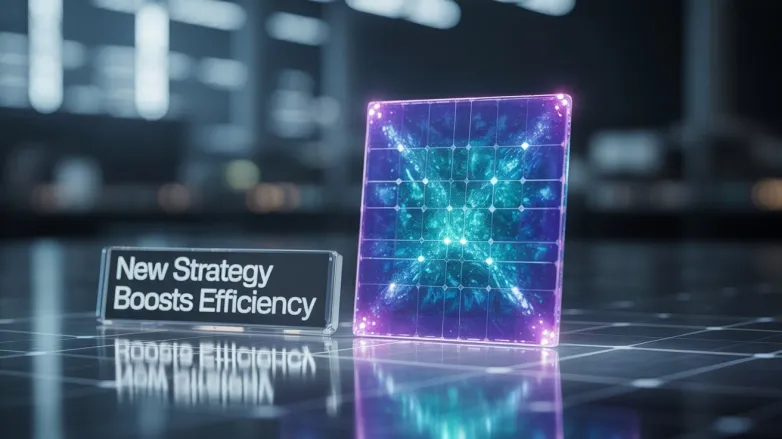New Strategy Boosts Perovskite Solar Cell Efficiency
- Revolutionizing solar power: New crystallization strategy boosts perovskite cell efficiency to 26.1%, ensuring stability and paving the way for future energy breakthroughs.

Researchers from several U.S. institutions have developed a new strategy to enhance the efficiency and stability of FAPbI3-based perovskite solar cells by controlling the crystallization process. This approach involves using organic salts with Lewis acids that deprotonate to form Lewis bases on demand, stabilizing the δ-phase while facilitating the transition to the α-phase. This method optimizes crystallization, resulting in improved film quality with larger grain sizes and fewer voids.
The team tested their strategy, achieving a power conversion efficiency of 26.1% and a certified quasi-steady-state efficiency of 25.33%. The solar cells maintained 96% of their initial efficiency after 1,000 hours of operation at 85°C. Mini-modules with an 11.52 cm² aperture area reached an efficiency of 21.47%. This Lewis-base formation strategy could be applied to other perovskite materials, potentially advancing the deployment of perovskite-based solar cells.
How does the new crystallization strategy improve FAPbI3-based perovskite solar cells' efficiency?
- Enhances film quality by producing larger grain sizes, which reduces grain boundary defects and improves charge carrier mobility.
- Minimizes voids in the perovskite layer, leading to better light absorption and reduced recombination losses.
- Stabilizes the δ-phase, which is crucial for maintaining structural integrity and preventing degradation over time.
- Facilitates a controlled transition to the α-phase, which is the desired phase for optimal photovoltaic performance.
- Increases overall power conversion efficiency, achieving a notable 26.1% in laboratory settings.
- Demonstrates excellent thermal stability, retaining 96% of initial efficiency after prolonged exposure to high temperatures.
- Offers potential scalability, as evidenced by the successful application in mini-modules with significant efficiency.
- Provides a versatile approach that could be adapted to other perovskite compositions, broadening the scope of high-efficiency solar cell development.
Also read

